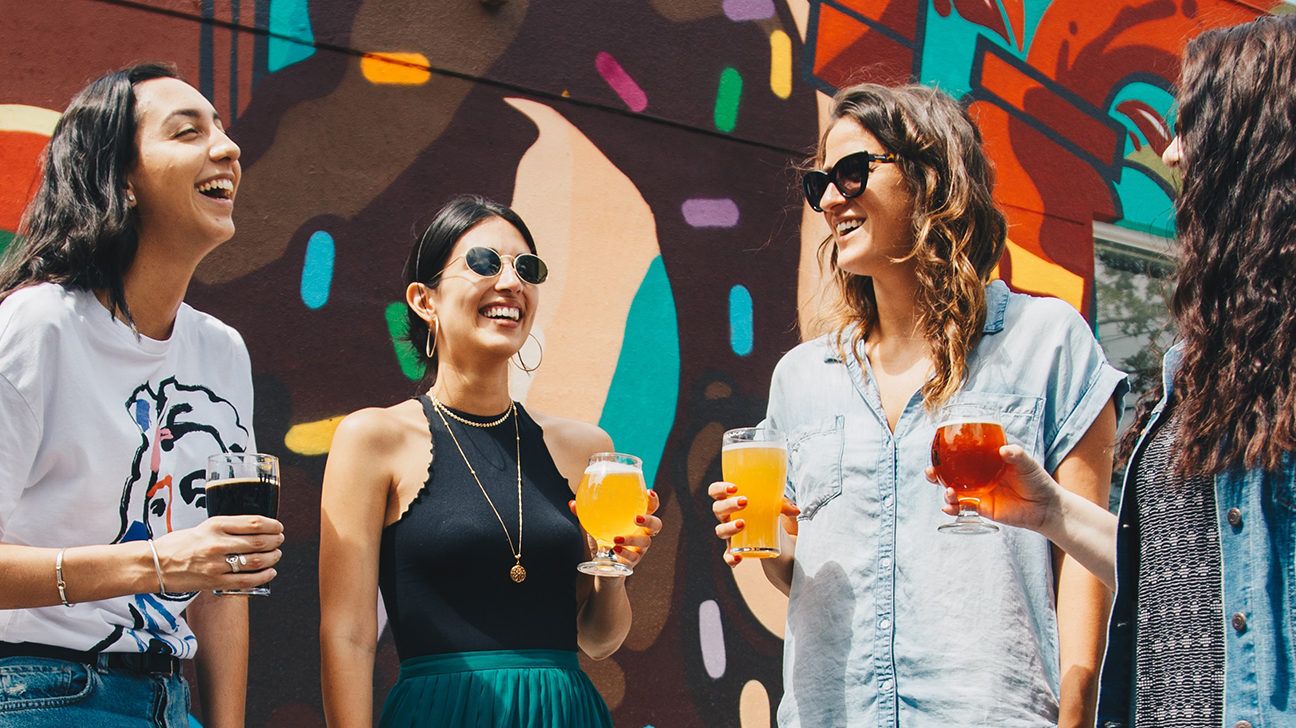Every August, Angel City Brewing releases their annual limited edition Avocado Ale, a Kölsch-style beer brewed with the soft green stuff as well as cilantro and lime — a truly guac-ified beer.
Tasters describe it as smooth, picking up the texture and subtle flavor of avocados while being an all-around highly sippable summer beer. The combination just works, at least according to its loyal Angeleno fanbase.
If you’re a purist when it comes to beer, the very thought of this might offend you. After all, it was law in Germany for hundreds of years that beer should consist of only grain, yeast, hops, and water — and Germany has a pretty strong beer reputation.
But there’s a reason this avocado ale has kept coming back every year, for at least the last 7 years.
Maybe it’s because the brewers have managed to complement the grain and hops with fresh, often local, ingredients. They make very technical decisions about exactly which ingredients to use, how much of them to add, and when in the process to add them to create a nuanced taste.
If craft brewers see creating beers with unique ingredients as a worthwhile challenge, is there any reason for drinkers to look at those beers as anything less than an adventure?
One of my favorite activities when exploring a new city or region is to check out its breweries to get a sense of what’s central, as well as interesting and novel, to local brewers. The limited-batch oddballs that make it to taprooms always seem to call to me. A beer brewed with smoked currants? How could I resist? And more often than not, the experiment is a pleasant one.
I’m not suggesting you never touch a basic Kölsch again. But trying unusual, creative brews is just plain fun and a great way to see what craft brewers are currently interested in. As the craft beer movement in the United States continues to grow, independent makers are branching out more and more — lucky for us.
If you’re looking to spice things up but you have some trepidation, fear not. Here are some tips for venturing into the world of weird beer. You’ll forget all about your basic standby IPA.
When trying new styles or flavors, keep an open mind, especially if you’re trying something particularly unusual. There’s nothing worse than ordering what you think is going to be a light and refreshing beer and ending up with something heavy on a hot day, or getting something super sweet when you were expecting a mild fruity flavor.
With this in mind, some basic beer knowledge is your friend. When shopping for adventurous beers, it’s good to have an understanding of what you can expect based on the style of beer.
If it’s labeled a sour, gose, Berliner Weisse, or wild ale, it’s probably going to be, well, sour. Sour beers can be polarizing — people tend to love them or hate them — but if you go in prepared for tartness and with an open mind, you’re more likely to enjoy it.
Stouts and porters tend to have a lot of body, meaning they feel thicker and heavier to drink (like Guinness). Because of their light natural sweetness and toasty flavor notes, it’s pretty common for brewers to play around with novel flavors in these styles of beer — think peanut butter, chocolate, coffee, vanilla, and so on.
Pastry stouts take this body and flavor combo to the max. If you order one of these expecting something just slightly accented with cocoa nibs and vanilla, you’ll probably be unhappy. Expect it to taste pretty much literally like dessert: sweet, pretty heavy, and with very strong flavors of something like doughnuts or cinnamon rolls.
When brewers play around with adding unusual ingredients to beer, it’s often because those ingredients are in season locally. That’s why you’ll find a lot of blueberry beers coming out of Maine breweries in the summer and pumpkin beers around the country in the fall (and avocado from Southern California!).
While these kinds of brews sometimes take heat for being the basic PSLs of the beer world, in this beer lover’s opinion, they’re actually a clever and fun way to showcase local agriculture.
Look for beers that say they’ve been brewed with real fruit or spices (or whatever the flavor may be) added to the mash, rather than artificial flavoring. Bonus points if they brag about partnering with specific nearby farms.
Grabbing a case of that Sriracha-flavored beer is definitely a leap of faith. The beauty of going to a brewery, or even a bar that specializes in craft beer, is that you can get a flight or just a splash of a weird beer to make sure you’re into it before going for a full pour.
You never know whether the s’mores beer that seems like it was brewed just for you will be disappointingly mild or cloyingly sweet until you try it — or, conversely, if the Thai chile beer you’re curious but apprehensive about will end up being your new favorite.
If you’re shopping for beers to bring home, look for places that let you build a six-pack so you can start with a single can of an oddball beer (and maybe recruit a friend to split it with you, especially if it’s a heavier style). If you like it, you can always grab more later.
Ariana DiValentino is a writer, filmmaker, and actor based in Los Angeles. Follow her on Twitter.

